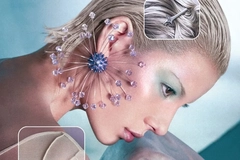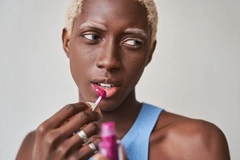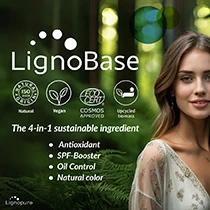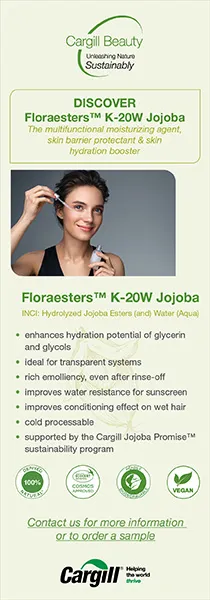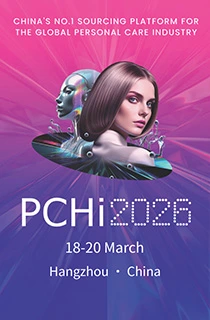EU soon to limit certain cosmetic UV filters amid health concerns

13 Jul 2022 --- The European Commission has published an amended regulation regarding a limit to the use of the UV filters Benzophenone-3 and Octocrylene in cosmetic products due to endocrine-disrupting properties flagged by the Scientific Committee on Consumer Safety (SCCS).
“The new maximum limits and restrictions recommended by the SCCS in its latest opinions on Benzophenone-3 and Octocrylene allow for their safe use in cosmetic products,” a Commission official tells, PersonalCareInsights.
“Cosmetics containing concentrations that are above the maximum concentrations found safe for Benzophenone-3 and Octocrylene used in the respective product categories will be banned. The ban will be implemented gradually.”
The published Annex is to be enforced on July 28 this month. From this date, companies would have a maximum of one year – until July 28, 2023, to continue selling their products compliant with the old standard. After the deadline, products that do not meet the new requirements will be removed from the market.
“Member State competent authorities are in charge of in-market controls in view of detection of cosmetic products that are not in compliance with Regulation,” continues the official.
Moreover, the two chemicals are noted to carry the potential to disrupt the endocrine system – overall evidence is not “conclusive enough,” notes the SCCS.
Limitations for cosmetic use
The official explains that in light of concerns related to potential endocrine disrupting properties of Benzophenone-3 and Octocrylene, when used as UV filters in cosmetic products, the Commission launched a call for data in 2019.
“Stakeholders submitted scientific evidence to demonstrate the safety of Benzophenone-3 and Octocrylene as UV filters in cosmetic products. The Commission requested SCCS to carry out a safety assessment of both substances in view of the information provided.”
Updates to the concentrations are as follows: Benzophenone-3 can be used up to 6% in face products, hand products and lip products. However, in this category, it can only be used up to 0.5% to protect the formulation. If 0.5% is used to protect formulation, then levels used for UV filter cannot exceed 5.5%  Companies have a maximum of one year – until July 28, 2023, to continue selling their products compliant with the old standard.
Companies have a maximum of one year – until July 28, 2023, to continue selling their products compliant with the old standard.
Additionally, Benzophenone-3 is allowed up to 2.2% in body products, propellent and pump spray products and up to 0.5% for other products. However, in this range, it can only be used up to 0.5% to protect product formulation. If 0.5% of Benzophenone-3 is used to protect a formulation, then the chemical levels used for the UV filter cannot exceed 1.7%.
On the other hand, Octocrylene can be used up to 9% in propellant spray products and up to 10% in other products.
Benzophenone-3 and Octocrylene are organic compounds used for UV filters, and Octocrylene is also used as a light stabilizer, underscores Cosmeservice.
Why not a ban?
In 2021, the SCCS noted that there is “inconclusive, and at best equivocal” evidence for Benzophenone-3 as an endocrine-disrupting substance.
“While there are indications from some studies to suggest that Benzophenone-3 may have endocrine effects, the overall evidence is not conclusive enough at present for the SCCS to ascertain whether or not BP-3 is an ED substance, and this warrants further investigations,” it outlines.
A study by the Polish Medical University of Bialystok, published in February, flagged that studies have shown that Benzophenone-3 can penetrate the bloodstream, blood-brain barrier and blood-placental barrier after topical application. Additionally, it “may induce the reproductive toxicity and abnormal development of the fetus, endocrine system disruption and neurotoxicity in experimental animal models.”
Similarly, SCCS observes “indications” via some in-vivo studies to suggest that Octocrylene may have endocrine effects. However, “the evidence is not conclusive enough at present to enable deriving a specific endocrine-related toxicological point of departure for use in safety assessment.”
“Taking into consideration the widespread use of Octocrylene in cosmetic products, the number of reported cases of allergic contact dermatitis appears to be negligible,” it continues.
The SCCS has not considered the safety of Benzophenone-3 and Octocrylene for the environment. Benzophenone-3 and Octocrylene are organic compounds used for UV filters.
Benzophenone-3 and Octocrylene are organic compounds used for UV filters.
Researchers at Stanford University found that sunscreen ingredient oxybenzone, can be converted into a potentially deadly phototoxin inside anemone and coral cells when exposed to sunlight, resulting in increased damage and maybe death.
Blazing sun care NPD
Nanophase Technologies, the parent company of Solésence, received a patent in Korea for Kleair, a new generation of high-transparency zinc oxide mineral sunscreen with “enhanced” ultra-violet (UV) blocking properties.
Additionally, L’Oréal introduced its newest sun filtering technology, UVMune 400. The ingredient protects the skin against ultra-long UVA rays – the 30% of solar rays that have so far been insufficiently filtered, according to the beauty giant.
Symrise unveiled its cosmetic brand Neo Heliopan in May, a mineral UV filter range developed under its care segment and with its strategic partner Kobo, a company specializing in mineral UV filters.
By Venya Patel

